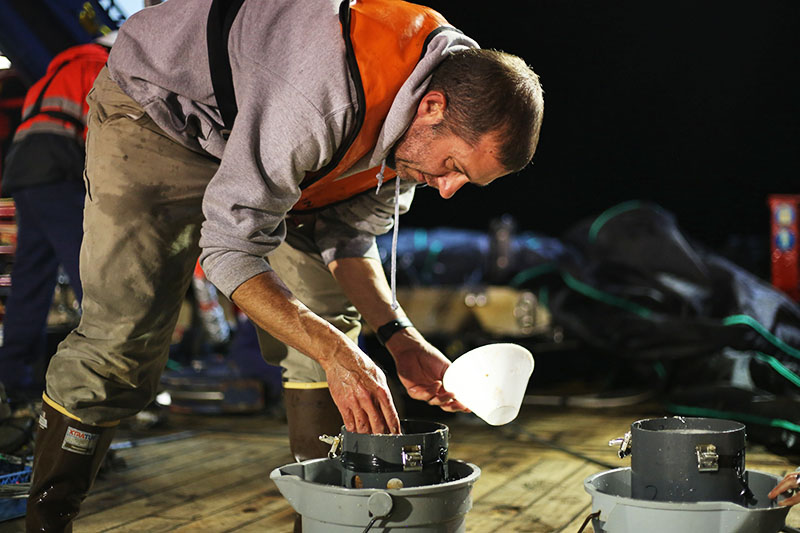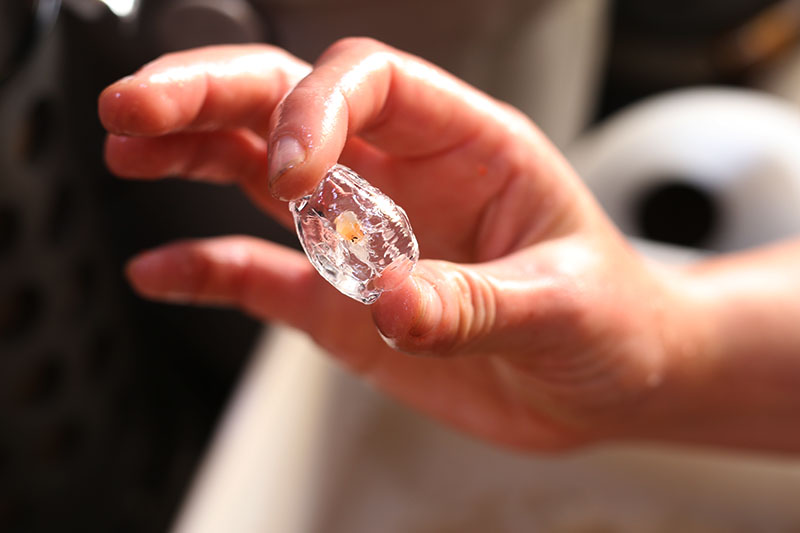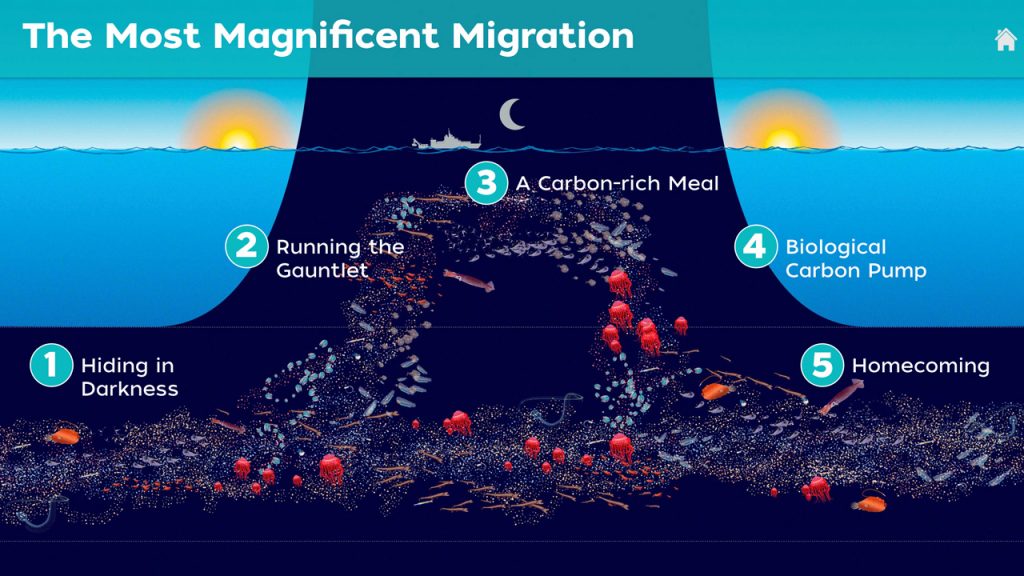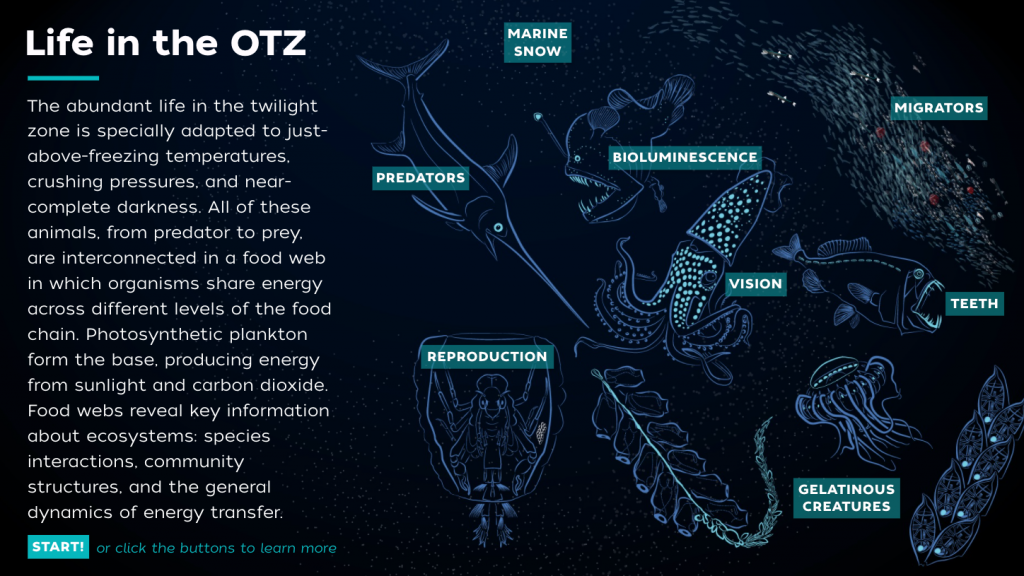Day 14: The great migration
By Michelle Cusolito
When we hear the word “migration” we often picture charismatic animals covering vast distances—like wildebeests crossing the Serengeti, or Canada geese flying south for the winter. But did you know that the largest migration on earth happens every single day, twice a day, across the world ocean?
Oceanographers call this phenomenon diel vertical migration: at night, animals in the mid-ocean twilight zone travel up to the surface to eat, then reverse their journey before sunrise to avoid being eaten by predators.
“We think the animals respond to light levels,” says Joel Llopiz, a Woods Hole Oceanographic Institution (WHOI) biologist who studies the fish that make this twice-daily trek. “The critters don’t want to be seen because predators will eat them. They go up at night to eat, but don’t want to be eaten.”
One of Joel’s major goals is to understand the vulnerability and resilience of twilight zone fish. His questions include: How long do the fish live? How fast and how well do they reproduce?
To answer that first question, Joel counts the rings on an individual fish’s ear stone (otolith) to determine its age—similar to counting rings on a tree.
Fishing industries around the world are interested in harvesting twilight zone animals to feed both people and farmed fish and shellfish. Gaining insight into the inner workings of the twilight zone ecosystem – before large-scale fishing begins— is essential.
“If we know how long fish live and when they reproduce, we can better predict the impacts of fishing and make decisions regarding how to manage fisheries,” Joel says. “To fish the twilight zone sustainably, we need to understand it.”
That’s why Joel and his team are looking closely at twilight zone biodiversity. If there are lots of different types of animals present, from tiny zooplankton to top-of-the-foodchain predators, that’s considered good biodiversity, which means it’s probably a healthy ecosystem. After collecting samples in special nets like the MOCNESS, scientists like Joel use genetic sequencing tools to figure out what’s there. Testing water for environmental DNA (eDNA), a project led by WHOI molecular ecologist Annette Govindarajan, also helps scientists estimate the biodiversity in the twilight zone.
Kayla Gardner, an MIT-WHOI joint program student and a member of the MOCNESS team on this cruise, uses stable isotopes to better understand the marine food web.
“We don’t know how much the animals eat at the surface versus how much they eat in the deep. I’m looking at the bigger picture to see how animals are connected within the twilight zone food web and how they are connected to surface food webs,” she says.
So far, this expedition has given researchers valuable insights into a vast and hard-to-access part of the ocean.
“It’s an extraordinary experience to work on the leading edge of discovery like this,” Kayla says. “Every time I go to sea, we pull up animals I’ve never seen and I’m like a kid in a candy shop every time.”











